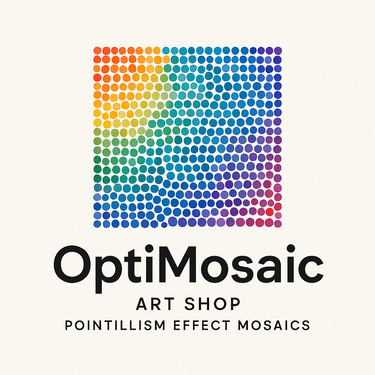The Hidden Colors – Unveiling Optical Color Mixing in Art
The world of art is filled with countless techniques designed to captivate and challenge the viewer. Among the most fascinating is a phenomenon known as optical color mixing, a concept that plays a central role in the mesmerizing artworks of Rohit Kalbag, featured here at OptiMosaics. But what exactly is optical color mixing, and how does an artist harness this scientific principle to create such compelling visual experiences?
9/27/20251 min read


When most people think of color mixing, they imagine an artist blending pigments on a palette—red and yellow make orange, blue and yellow make green. This is known as subtractive color mixing, where pigments absorb certain wavelengths of light and reflect others, resulting in the colors we see.
Optical color mixing, however, is a different beast entirely. It's an additive process that happens not on the canvas, but within your own eyes and brain. Imagine tiny dots of pure color placed side-by-side. If these dots are small enough, and you view them from a sufficient distance, your eyes lose the ability to distinguish each individual dot. Instead, your brain "averages" the colors together, perceiving them as a single, new color. Think of it like this: Up close, you see distinct pixels on a screen. From a distance, those pixels blend into a smooth image.
While Rohit Kalbag brings a modern, computer-assisted approach to optical color mixing, the technique has a rich history in art. Perhaps the most famous proponents were the Pointillists of the late 19th century, with Georges Seurat being a prime example. Artists like Seurat meticulously applied small, distinct dots of pure color to their canvases. When viewed from a distance, these dots would blend in the viewer's eye, creating luminous and vibrant effects that traditional brushstrokes couldn't achieve.
Rohit Kalbag takes this historical technique and propels it into the 21st century. Utilizing computer assistance, he achieves an unparalleled level of precision in placing individual color elements. This allows him to create intricate patterns and designs that, when viewed up close, appear as complex abstract compositions. However, as you step back, these seemingly disparate elements coalesce, revealing stunning images, subtle gradients, and entirely new color palettes that were "hidden" in plain sight.
